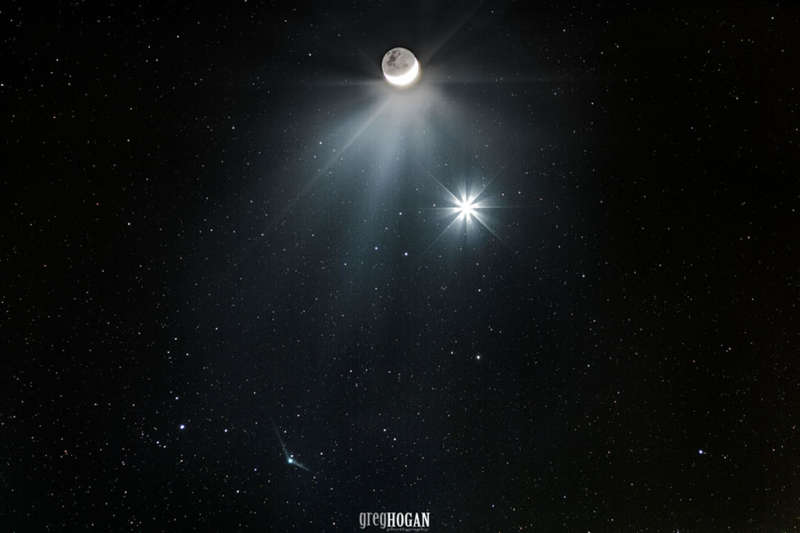Credit & Copyright: Greg Hogan
Explanation:
A
crescent Moon and brilliant Venus met in predawn
skies on December 7, a
beautiful conjunction of planet
Earth's two brightest celestial beacons after the Sun.
Harder to see but
also
on the scene was Comet Catalina
(C/2013 US10).
The fainter comet clearly sporting two tails,
lunar night side, bright sunlit lunar crescent, and brilliant morning star,
are all recorded here by combining short and long exposures
of the same field of view.
Pointing down and right, Catalina's dust tail
tends to trail behind the comet's orbit.
Its ion tail, angled toward
the top left of the frame, is blowing away from the Sun.
Discovered in 2013, the new visitor from the
Oort cloud
was closest to the Sun on November 15 and is now outbound,
headed for its closest approach to Earth in mid-January.
Watch: The
Geminids
1999 2000 2001 2002 2003 2004 2005 2006 2007 2008 2009 2010 2011 2012 2013 2014 2015 2016 2017 2018 2019 2020 2021 2022 2023 2024 2025 |
Yanvar' Fevral' Mart Aprel' Mai Iyun' Iyul' Avgust Sentyabr' Oktyabr' Noyabr' Dekabr' |
NASA Web Site Statements, Warnings, and Disclaimers
NASA Official: Jay Norris. Specific rights apply.
A service of: LHEA at NASA / GSFC
& Michigan Tech. U.
|
Publikacii s klyuchevymi slovami:
comet - Moon - Venus - komety - Luna - Venera
Publikacii so slovami: comet - Moon - Venus - komety - Luna - Venera | |
Sm. takzhe:
Vse publikacii na tu zhe temu >> | |
